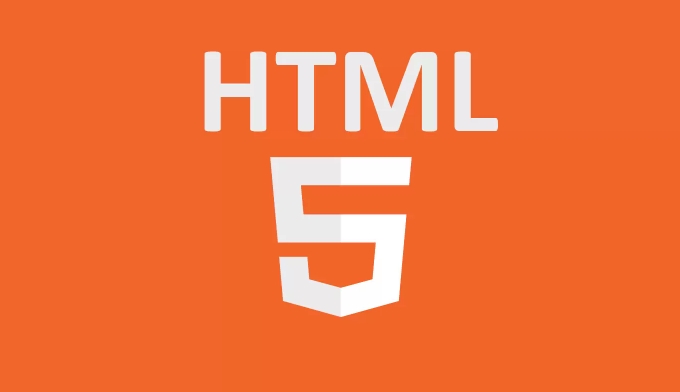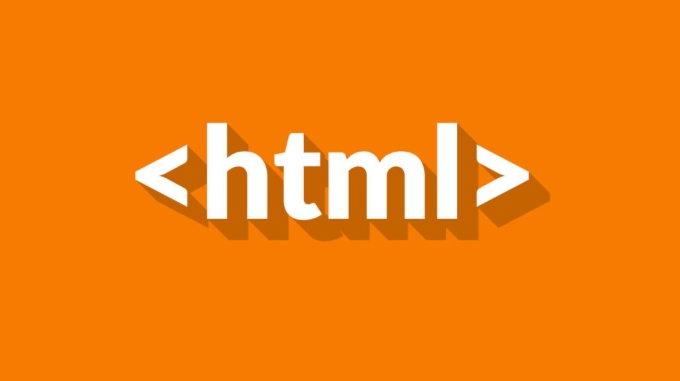Use feature detection instead of browser detection by checking for the presence of APIs in JavaScript, such as typeof(Storage) !== "undefined" for localStorage support. 2. Use Modernizr for comprehensive feature detection, which adds HTML classes and enables JavaScript checks like Modernizr.canvas while allowing customized, lightweight builds. 3. Perform direct API checks for common HTML5 features: use !!document.createElement('canvas').getContext for Canvas, !!document.createElement('video').canPlayType for Video, check navigator.geolocation for Geolocation, typeof(Worker) !== "undefined" for Web Workers, and test element properties for Drag and Drop support. 4. Use the in operator to verify property availability, such as 'querySelector' in document or 'fetch' in window. Always apply progressive enhancement by building a functional base experience, enhancing with HTML5 features when supported, and providing fallbacks like polyfills—for example, loading a fetch polyfill from a CDN to ensure compatibility across all browsers.

Checking for browser support of HTML5 features is essential to ensure your web application works across different browsers and devices. You don’t want users to encounter broken functionality just because their browser doesn’t support a specific feature. Here’s how you can do it effectively.

1. Use Feature Detection (Not Browser Detection)
Avoid checking the user agent string—it’s unreliable and doesn’t tell you what features are actually supported. Instead, use feature detection, which tests whether a specific feature is available in the current browser.
The most straightforward way is to check for the presence of an API or property in JavaScript:

// Check if localStorage is supported
if (typeof(Storage) !== "undefined") {
// localStorage is available
localStorage.setItem("test", "hello");
} else {
// Fallback for older browsers
console.log("No local storage support");
}2. Use Modernizr (Recommended for Multiple Features)
Modernizr is a popular JavaScript library that automatically detects support for HTML5 and CSS3 features.
Include Modernizr in your page:

<script src="modernizr.js"></script>
It adds classes to the
<html>element (e.g.,flexbox,no-canvas,localstorage)You can also test features directly in JavaScript:
if (Modernizr.canvas) { // Canvas is supported } else { // Canvas not supported – use fallback }
You can customize the build to include only the tests you need, keeping file size small.
3. Direct API Checks for Common HTML5 Features
Here are some common checks you can perform manually:
Canvas:
function supportsCanvas() { return !!document.createElement('canvas').getContext; }Video:
function supportsVideo() { return !!document.createElement('video').canPlayType; }Geolocation:
if (navigator.geolocation) { // Geolocation is supported }Web Workers:
if (typeof(Worker) !== "undefined") { // Web Workers supported }Drag and Drop:
function supportsDragAndDrop() { var div = document.createElement('div'); return ('draggable' in div) || ('ondragstart' in div && 'ondrop' in div); }
4. Use the in Operator for Properties
To check if a certain property exists in an object:
if ('querySelector' in document) {
// Modern DOM selection is supported
}Or for newer APIs like fetch:
if ('fetch' in window) {
// You can use fetch()
}Bonus: Progressive Enhancement & Fallbacks
Always design with progressive enhancement:
- Build a basic experience that works everywhere.
- Enhance with HTML5 features when available.
- Provide fallbacks (e.g., Flash for video, polyfills for APIs).
For example, using a polyfill for fetch:
<script src="https://cdn.polyfill.io/v2/polyfill.min.js?features=fetch"></script>
Basically, just check if the feature exists before using it. Use Modernizr for broad detection, or write simple JavaScript checks for individual features. It’s not complex, but it keeps your site working for more users.
The above is the detailed content of How to check for browser support for HTML5 features?. For more information, please follow other related articles on the PHP Chinese website!

Hot AI Tools

Undress AI Tool
Undress images for free

Undresser.AI Undress
AI-powered app for creating realistic nude photos

AI Clothes Remover
Online AI tool for removing clothes from photos.

Clothoff.io
AI clothes remover

Video Face Swap
Swap faces in any video effortlessly with our completely free AI face swap tool!

Hot Article

Hot Tools

Notepad++7.3.1
Easy-to-use and free code editor

SublimeText3 Chinese version
Chinese version, very easy to use

Zend Studio 13.0.1
Powerful PHP integrated development environment

Dreamweaver CS6
Visual web development tools

SublimeText3 Mac version
God-level code editing software (SublimeText3)

Hot Topics
 Applying Semantic Structure with article, section, and aside in HTML
Jul 05, 2025 am 02:03 AM
Applying Semantic Structure with article, section, and aside in HTML
Jul 05, 2025 am 02:03 AM
The rational use of semantic tags in HTML can improve page structure clarity, accessibility and SEO effects. 1. Used for independent content blocks, such as blog posts or comments, it must be self-contained; 2. Used for classification related content, usually including titles, and is suitable for different modules of the page; 3. Used for auxiliary information related to the main content but not core, such as sidebar recommendations or author profiles. In actual development, labels should be combined and other, avoid excessive nesting, keep the structure simple, and verify the rationality of the structure through developer tools.
 What are the essential HTML elements for structuring a webpage?
Jul 03, 2025 am 02:34 AM
What are the essential HTML elements for structuring a webpage?
Jul 03, 2025 am 02:34 AM
The web page structure needs to be supported by core HTML elements. 1. The overall structure of the page is composed of , , which is the root element, which stores meta information and displays the content; 2. The content organization relies on title (-), paragraph () and block tags (such as ,) to improve organizational structure and SEO; 3. Navigation is implemented through and implemented, commonly used organizations are linked and supplemented with aria-current attribute to enhance accessibility; 4. Form interaction involves , , and , to ensure the complete user input and submission functions. Proper use of these elements can improve page clarity, maintenance and search engine optimization.
 Implementing client-side form validation using HTML attributes.
Jul 03, 2025 am 02:31 AM
Implementing client-side form validation using HTML attributes.
Jul 03, 2025 am 02:31 AM
Client-sideformvalidationcanbedonewithoutJavaScriptbyusingHTMLattributes.1)Userequiredtoenforcemandatoryfields.2)ValidateemailsandURLswithtypeattributeslikeemailorurl,orusepatternwithregexforcustomformats.3)Limitvaluesusingmin,max,minlength,andmaxlen
 What are self-closing tags in HTML?
Jul 02, 2025 pm 02:55 PM
What are self-closing tags in HTML?
Jul 02, 2025 pm 02:55 PM
Self-closing tags are elements in HTML that do not require closed tags because they do not contain content. Common examples include: ① Insert pictures; ② Add line breaks; ③ Create horizontal lines; ④ Define form input; ⑤ Link external resources; ⑥ Provide metadata. These tags work through attributes such as or. There are two correct ways to write: standard HTML syntax, such as XHTML style, but HTML5 recommends the former. Note that you cannot use self-closed form on labels that require the package content. If the error is wrong, it should be changed to a correctly closed Hello. Proper use of self-closing tags helps keep your code simple and efficient, and improves compatibility with other tools such as frameworks.
 Implementing Clickable Buttons Using the HTML button Element
Jul 07, 2025 am 02:31 AM
Implementing Clickable Buttons Using the HTML button Element
Jul 07, 2025 am 02:31 AM
To use HTML button elements to achieve clickable buttons, you must first master its basic usage and common precautions. 1. Create buttons with tags and define behaviors through type attributes (such as button, submit, reset), which is submitted by default; 2. Add interactive functions through JavaScript, which can be written inline or bind event listeners through ID to improve maintenance; 3. Use CSS to customize styles, including background color, border, rounded corners and hover/active status effects to enhance user experience; 4. Pay attention to common problems: make sure that the disabled attribute is not enabled, JS events are correctly bound, layout occlusion, and use the help of developer tools to troubleshoot exceptions. Master this
 How to group options within a select dropdown using html?
Jul 04, 2025 am 03:16 AM
How to group options within a select dropdown using html?
Jul 04, 2025 am 03:16 AM
Use tags in HTML to group options in the drop-down menu. The specific method is to wrap a group of elements and define the group name through the label attribute, such as: 1. Contains options such as apples, bananas, oranges, etc.; 2. Contains options such as carrots, broccoli, etc.; 3. Each is an independent group, and the options within the group are automatically indented. Notes include: ① No nesting is supported; ② The entire group can be disabled through the disabled attribute; ③ The style is restricted and needs to be beautified in combination with CSS or third-party libraries; plug-ins such as Select2 can be used to enhance functions.
 Configuring Document Metadata Within the HTML head Element
Jul 09, 2025 am 02:30 AM
Configuring Document Metadata Within the HTML head Element
Jul 09, 2025 am 02:30 AM
Metadata in HTMLhead is crucial for SEO, social sharing, and browser behavior. 1. Set the page title and description, use and keep it concise and unique; 2. Add OpenGraph and Twitter card information to optimize social sharing effects, pay attention to the image size and use debugging tools to test; 3. Define the character set and viewport settings to ensure multi-language support is adapted to the mobile terminal; 4. Optional tags such as author copyright, robots control and canonical prevent duplicate content should also be configured reasonably.
 Adding captions and tracks to HTML video and audio elements.
Jul 02, 2025 pm 04:05 PM
Adding captions and tracks to HTML video and audio elements.
Jul 02, 2025 pm 04:05 PM
To embed video or audio with subtitles and audio tracks into a web page, it can be achieved through HTML native functionality. 1. Use tags to add subtitles files in WebVTT format and set the kind, srclang and label attributes; 2. Support multi-language subtitles through multiple elements, and use the default attribute to set the default language; 3. Multi-tracks can control multiple element switching through JavaScript, or use more complex media extension solutions; 4. Pay attention to browser compatibility, path configuration and format verification to ensure normal operation on different devices and provide backup solutions.







